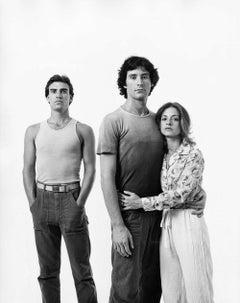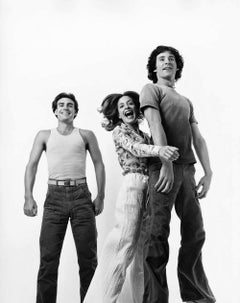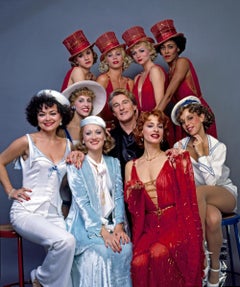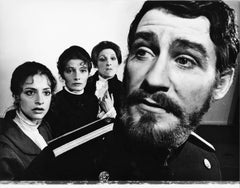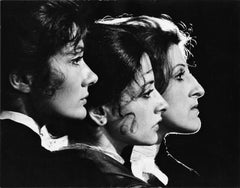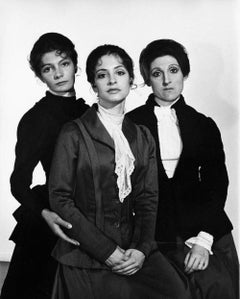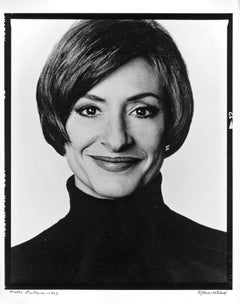Patti Lupone
1970s Pop Art Black and White Photography
Silver Gelatin
1970s Pop Art Black and White Photography
Silver Gelatin
1970s Pop Art Black and White Photography
Silver Gelatin
1970s Pop Art Black and White Photography
Silver Gelatin
1980s Pop Art Color Photography
Archival Pigment
1970s Pop Art Black and White Photography
Silver Gelatin
1970s Pop Art Black and White Photography
Silver Gelatin
1970s Pop Art Black and White Photography
Silver Gelatin
1980s Performance Color Photography
Photographic Paper
1970s Modern Nude Photography
Silver Gelatin
1970s Modern Nude Photography
Silver Gelatin
1970s Modern Nude Photography
Silver Gelatin
1970s Modern Nude Photography
Silver Gelatin
1970s Modern Nude Photography
Silver Gelatin
1970s Modern Nude Photography
Silver Gelatin
1970s Modern Photography
Silver Gelatin
1970s Modern Nude Photography
Silver Gelatin
1970s Modern Nude Photography
Silver Gelatin
1970s Modern Nude Photography
Silver Gelatin
1970s Modern Photography
Silver Gelatin
1970s Modern Photography
Silver Gelatin
1960s Modern Photography
Silver Gelatin
1960s Pop Art Black and White Photography
Silver Gelatin
1980s Pop Art Black and White Photography
Silver Gelatin
1960s Modern Nude Photography
Silver Gelatin
1970s Modern Photography
Silver Gelatin
1970s Modern Nude Photography
Silver Gelatin
1970s Modern Photography
Silver Gelatin
1970s Surrealist Black and White Photography
Photographic Paper
Recent Sales
1980s Pop Art Black and White Photography
Silver Gelatin
1980s Pop Art Black and White Photography
Silver Gelatin
1970s Modern Photography
Silver Gelatin
1920s American Modern Figurative Prints
Lithograph
Patti Lupone For Sale on 1stDibs
How Much is a Patti Lupone?
Jack Mitchell for sale on 1stDibs
Over his four-decade career, photographer Jack Mitchell chronicled the changing cultural landscape of mid- to late-20th-century America by capturing the greatest influencers and innovators in the performing and visual arts.
Mitchell, a master of lighting patterns in photography who had his first portrait published at the age of 15, organized more than 5,400 photographic sessions in his lifetime involving a list of sitters that is as astounding as it is long. A veritable roll call of heroes and idols, his studio guests include painters, dancers, actors, comedians, singers, composers, directors, writers, impresarios and anyone else who helped shape the zeitgeist.
During World War II, when he was only 16 years old, Mitchell photographed Veronica Lake for a Daytona newspaper. It was his first celebrity gig, but that didn’t stop the audacious wunderkind from asking the actress to sweep back her signature “peekaboo” locks so he could get her full face in the frame. Lake, who was in Florida to help the war effort and at the peak of her career, politely obliged, and the two later became lifelong friends.
Mitchell, who was openly gay (his long-term partner and manager, Robert Plavik, died in 2009), also struck up a close relationship with Gloria Swanson. From 1960 to 1970, he served as her personal paparazzo, snapping a variety of “candid” shots of the aging but eternally glamorous actress as if she were a pre-mobile/pre-social-media reality star.
The diverse publications in which Mitchell’s work has appeared — in addition to the New York Times, there’s Rolling Stone, Dance Magazine, People, Vogue, Vanity Fair, Time, Harper’s Bazaar and Newsweek — testify to the power of his arresting visual language and its ability to transcend themes and disciplines.
Mitchell also famously shot a series of intimate portraits of John Lennon and Yoko Ono in November 1980, just one month before the Beatles singer was assassinated. A picture from this session became the cover of People’s memorial issue, one of the magazine’s best-selling editions to date.
The showbiz gloss should not distract from Mitchell’s meticulous approach to photography. He insisted on producing his own prints in order to achieve what he deemed museum-quality patina and definition.
“Jack shot many rolls of black-and-white film, and always some color transparencies, of every famous person he photographed,” says Craig Highberger, a friend of the late photographer and the executive director of the Jack Mitchell Archives.
In the world of dance, the field for which Mitchell is best known, his striking and incisive shots of legendary performers and choreographers reflect the visceral energy that these luminaries introduced to the discipline in the 1960s and ’70s, widely considered the Golden Age of American dance theater.
“Jack’s photographs of dancers during his lifetime are a historic chronicle of an amazing period in dance history. He was Alvin Ailey’s dance company photographer from 1961 to 1994,” says Highberger, noting that Mitchell’s collection of 10,000 black-and-white Ailey prints now belongs to the Smithsonian’s National Museum of African American History and Culture.
Mitchell’s dance images are at once ethereal and powerfully dynamic. Not only do they evoke movement through elegant poses and disciplined muscular tension, but they also convey an intimate energy radiating directly from his subjects, as if he had magically unlocked a reflective mood or a character trait, without contrivance.
The collection of authentic Jack Mitchell photography on 1stDibs includes his black and white photography, color photography, nude photography and more.
Finding the Right Photography for You
Find a broad range of photography on 1stDibs today.
The first permanent image created by a camera — which materialized during the 1820s — is attributed to Joseph Nicéphore Niépce. The French inventor was on to something for sure. Kodak introduced roll film in the 1880s, allowing photography to become more democratic, although cameras wouldn’t be universally accessible until several decades later.
Digital photographic techniques, software, smartphone cameras and social-networking platforms such as Instagram have made it even easier in the modern era for budding photographers to capture the world around them as well as disseminate their images far and wide.
What might leading figures of visual art such as Andy Warhol have done with these tools at their disposal?
Today, when we aren’t looking at the digital photos that inundate us on our phones, we look to the past to celebrate the photographers who have broken rules as well as records — provocative and prolific artists like Horst P. Horst, Lillian Bassman and Helmut Newton, who altered the face of fashion and portrait photography; visionary documentary photographers such as Gordon Parks, whose best-known work was guided by social justice; and pioneers of street photography such as Henri Cartier-Bresson, who shot for revolutionary travel magazines like Holiday with the likes of globetrotting society lensman Slim Aarons.
Find photographers you may not know in Introspective and The Study — where you’ll read about Berenice Abbott, who positioned herself atop skyscrapers for the perfect shot, or “conceptual artist-adventurer” Charles Lindsay, whose work combines scientific rigor with artistic expression, or Massimo Listri, known for his epic interiors of opulent Old World libraries. Photographer Jeannette Montgomery Barron was given a Kodak camera as a child. Later, she shot on Polaroid film before buying her first 35mm camera in her teens. Barron's stunning portraits of Jean-Michel Basquiat, Warhol and other artists chronicle a crucial chapter of New York’s cultural history.
Throughout the past two centuries, photographers have used their medium to create expressive work that has resonated for generations. Shop a voluminous collection of this powerful fine photography on 1stDibs. Search by photographer to find the perfect piece for your living room wall, or spend some time with the work organized under various categories, such as landscape photography, nude photography and more.

